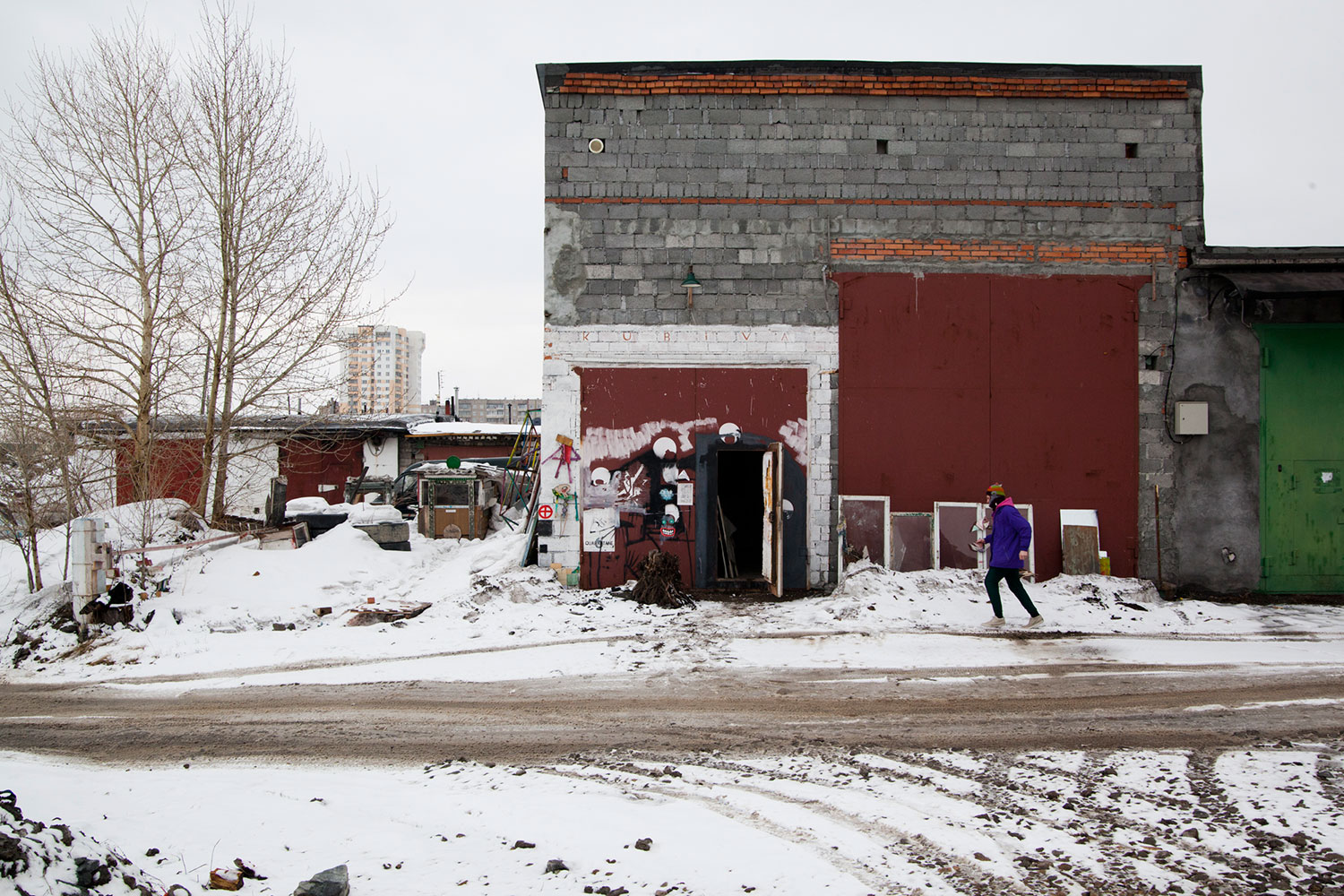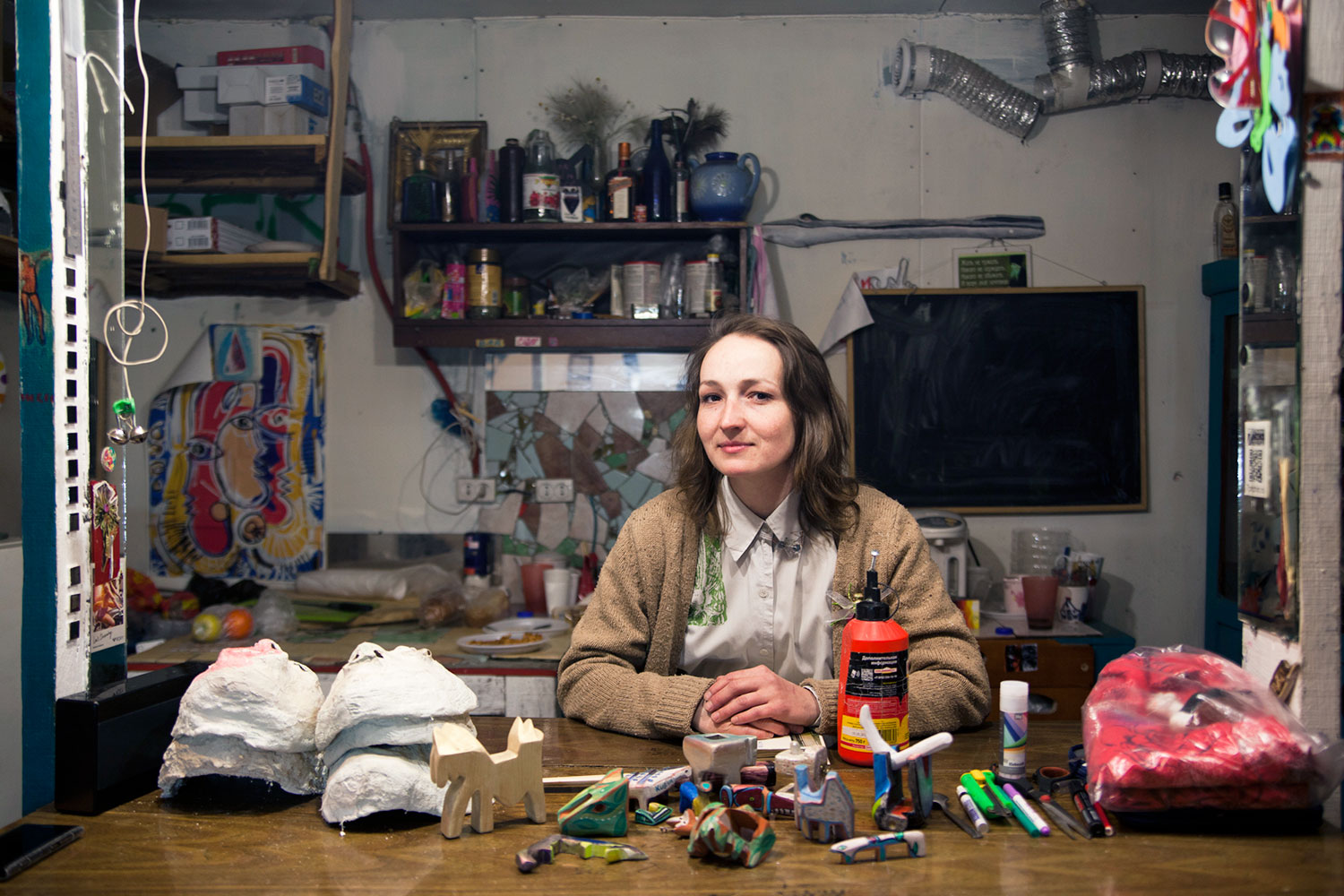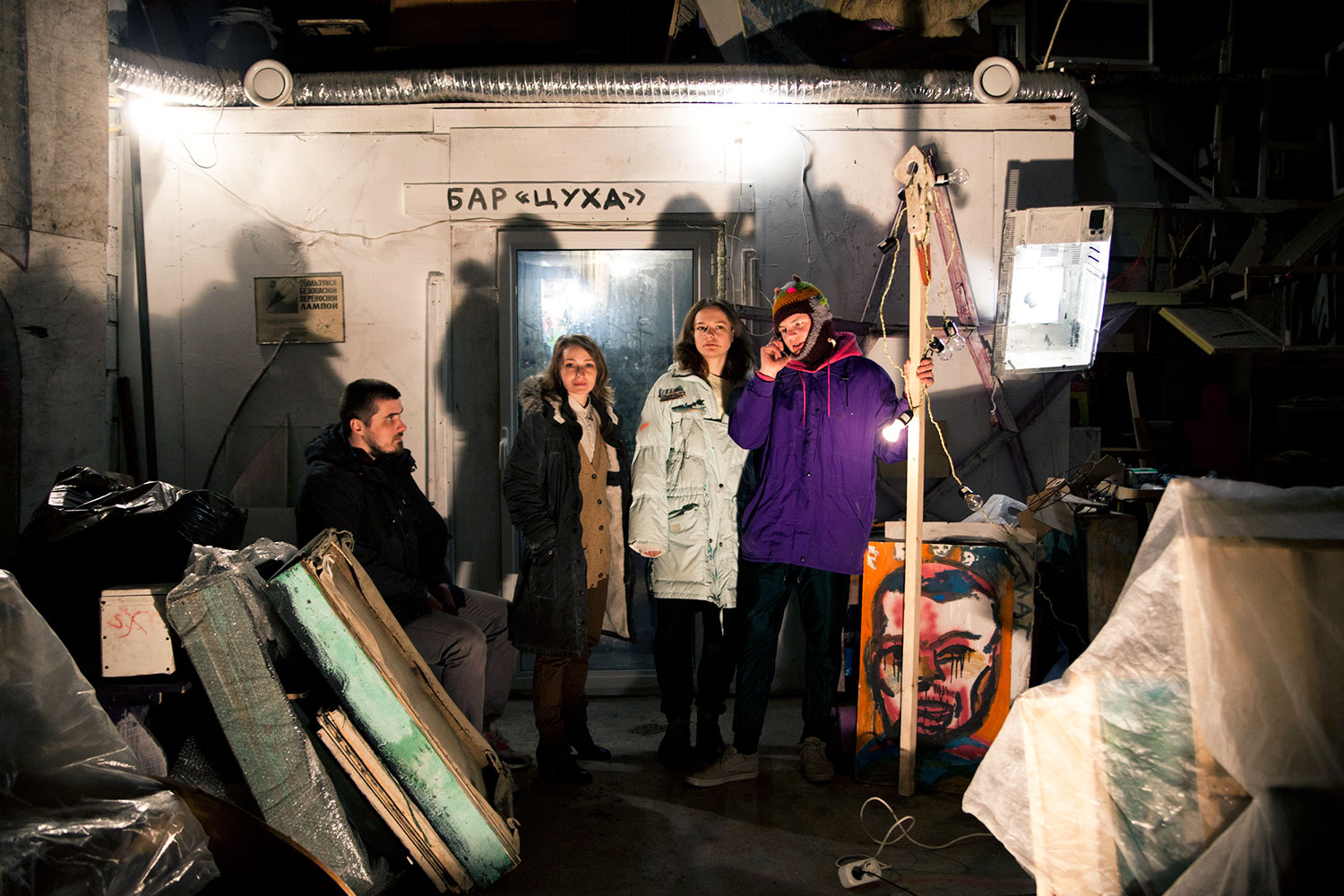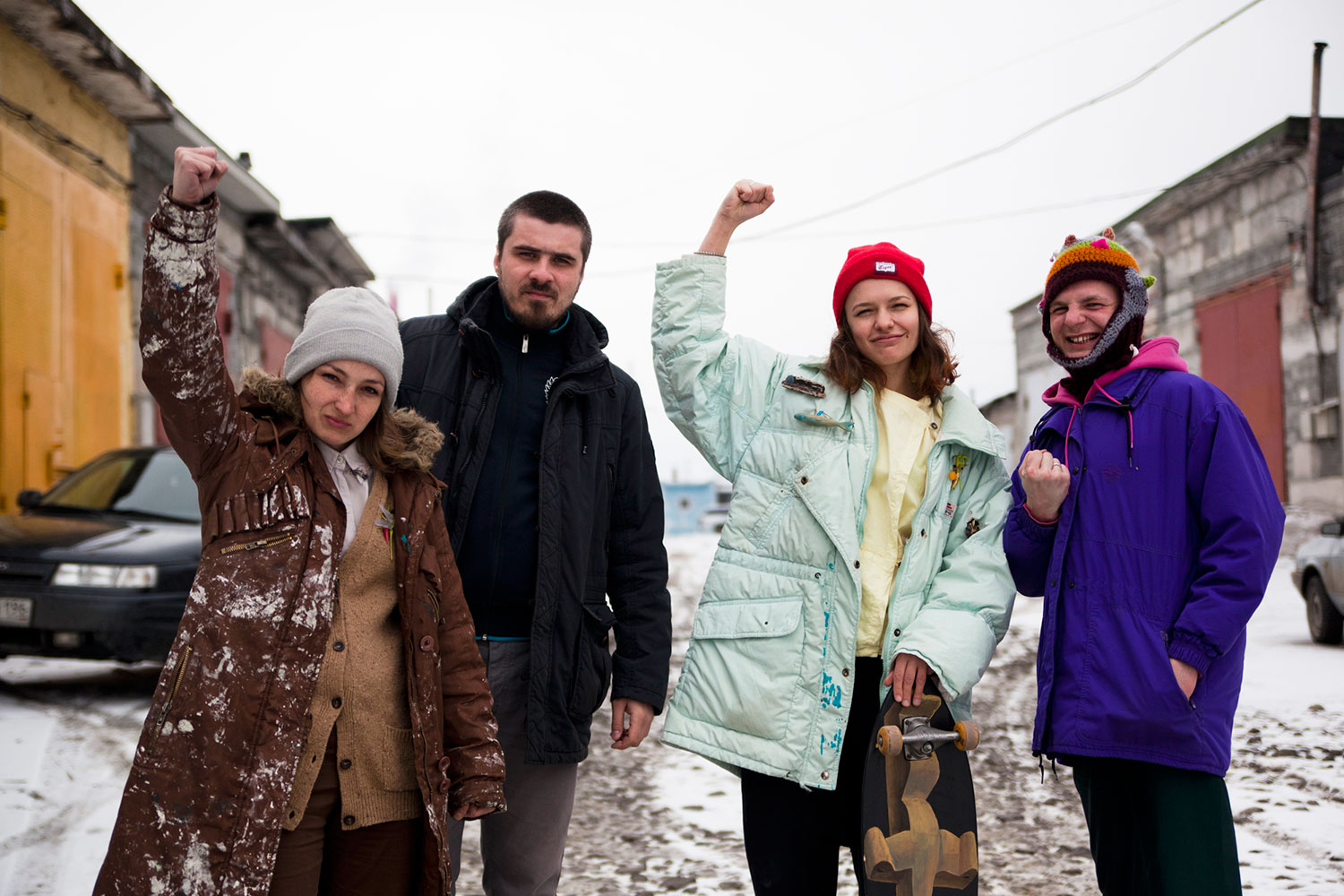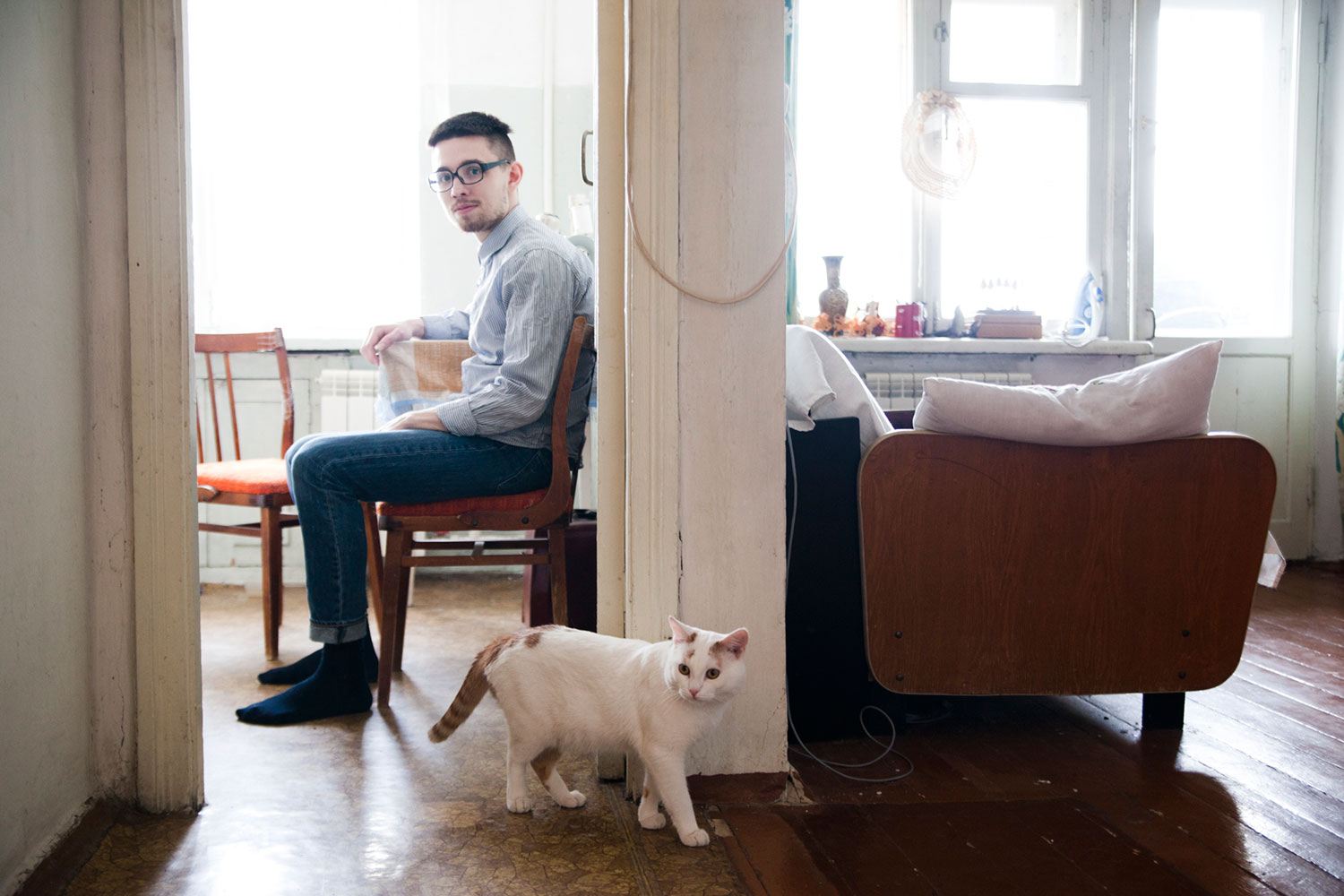Art in Nizhny Tagil: how a generation of young artists is transforming Russia’s decaying heartland
A rising generation of local artists are determined to turn their surrounding environment into modern art. Can they change Nizhny Tagil for the better?
On the outskirts of town, a garage cooperative where gruff Tagil blokes repair their cars has become a base for a posse of creative youths. “Kubiva” is an art space-cum-workshop organised by the art group Life as Performance – a group of youngsters who create modern art and organise punk parties frequented by local musicians. The space isn’t heated, so, come winter, guests and party-goers stay coated and scarved. That said, one little room has been equipped with a stove heater and boasts an improvised bar. The menu couldn’t be simpler – tea, vodka and beer.
Nizhny Tagil is a small industrial city in the Urals. A bird’s-eye view of its urban area would reveal an endless expanse of smoking chimneys and quarries. On the horizon, the Tagil sky is always black on account of the smoke, and, on days when the wind’s blowing in the direction of the city’s residential neighourhoods, breathing becomes complicated. The heart of town is dominated by the skyward-jutting remains of the former Demidov factory – a favourite haunt of local children and stray dogs – whose huge iron structures were left to rust after its closure.
The heart of town is dominated by the skyward-jutting remains of the former Demidov factory whose huge iron structures were left to rust after its closure
The post-Soviet era has been one of acute crisis for Nizhny Tagil: its factories are being shut down, the total number of jobs in the local area is declining, and young people are leaving in droves for the capital, or at least for the regional centre. Nonetheless, this city of simple and severe folk has also witnessed a gradual burgeoning of innovation amongst youngsters determined to create modern art – the lack of any outside support notwithstanding. Assembling installations out of trash and the debris of Soviet-era factories, and organising exhibition spaces in garage cooperatives, Tagil’s artists have attempted to integrate themselves into the context of this provincial industrial city, yet their efforts haven’t always been met with understanding from local residents.
“Life as Performance have attracted more attention in cities across Russia and around the world than we have in our own home town,” says Ksenia Koshurnikova, a member of the art group. “We live here, we engage with the town’s heritage, and yet we’ve failed to whet the interest of the locals.”
Life as Performance was founded by a group of likeminded friends in 2012. Their objective? To engage with the city via artistic means and create a fruitful environment for young local artists. Life as Performance transform their surrounding environment, turning it into modern art.
The art group Life as Performance aim to engage with the city via artistic means and create a fruitful environment for young local artists
Garbage is put to good use by the group, as are the material vestiges of the Soviet empire. Old agitprop display boards found in an abandoned military base are repainted and transfigured into art. The disintegrating Soviet past thereby becomes part of the present, acquiring new meanings in the process.
In big cities, people are used to throwing out anything that’s old and broken. In the provinces, however, getting your hands on, say, trendy modern clothing is far from easy, meaning that young people often rely on second-hand shops for their retail needs. It’s unsurprising, then, that “Second Hand” is the name chosen by the founders of another Tagil-based art group, one of their objectives being to give a new lease of life to things used or broken and transform them into art.
“As far as we were concerned, there just wasn’t enough art in our city,” says artist and Second Hand member Alisa Gorshenina. “We wanted to galvanise people, to drive them towards creating some kind of cultural environment here. Our projects were underpinned by consideration of the link between artist and locale, by an enquiry into the particulars of what it means to be a ‘Tagil-based artist’.”
“The idea of the project is to facilitate encounters between art and people who aren’t ready for these encounters”
But the group’s artistic endeavours have not always been to the liking of local residents. In 2015, Alisa decorated the peeling walls and fence of the local art institute with the stylised forms of seven unclothed maidens, each of them representing a protectrix of art. But the maidens’ naked bodies offended the religious sensibilities of conservative locals, and the administration of the art institute in which Alisa was enrolled forced her to paint over her work. Not to be outdone, Alisa turned the process of obscuring the figures with white paint into yet another creative act, christening it the “Destruction of the Seven Maidens of the Graphic Art Faculty”. In the wake of this controversy, even entirely innocuous works by the group came to be perceived in a negative light by locals.
The efforts of a group behind an art space called Yaitso (Egg) have met with similar incomprehension. The space’s creators wanted to develop a platform for the implementation of their creative ideas, but, once again, ordinary townspeople promptly bristled at the idea and set about writing complaint letters in which they accused the group of creating a “den of iniquity”.
Things are a little more optimistic over at the Space Place gallery. Curator Yevgeny Komukhin maintains that he’s not encountered any negative attitudes. But, although the gallery does enjoy regular visitors, its popularity amongst local residents is by no means going through the roof.
In spite of all the challenges facing them, Tagil-based artists remain full of enthusiasm and have pressed on with their projects, changing the environment around them for the better.
The folk behind Life as Performance are transforming Lebyazhka, one of Nizhny Tagil’s dormitory districts, into an art quarter. Adjoining the now closed mine of the same name, Lebyazhka is a fast-developing area of the city, complete with well-designed open spaces, flower gardens and abundant greenery and street art.
In spite of all the challenges facing them, Tagil-based artists remain full of enthusiasm and have pressed on with their projects, changing the environment around them for the better
Daria Tsvetkova, too, has resolved to fashion a creative reality around herself by turning the entrances of ordinary apartment buildings – chosen at random – into small exhibition spaces. “The idea of the project,” she says, “is to facilitate encounters between art and people who aren’t ready for these encounters. On one hand it’s an experiment, and, on the other, it’s an attempt to make people’s ossified brains understand that the world has changed and that art has changed, that it’s long since become ubiquitous whether you like it or not. Doesn’t matter whether you’re in Tagil or New York.”
All the Tagil-based artists agree that their city represents a cultural phenomenon of sorts. How is it that an ordinary industrial town in the provinces has produced people who truly appreciate and love that town, who strive to make sense of that town in their creative endeavours, who want to showcase that town to others?
“On one hand, Tagil is indeed a cultural phenomenon,” says Yevgeniy Komukhin, curator of the Space Place gallery. “On the other, we have two declining art schools – they’re being restructured, teaching staff are being made redundant, outdated curricula haven’t been updated.”
“I think the Graphic Art Faculty has played a big role,” adds Anna Litovskikh, an art expert from Ekaterinburg, “but it’s also really important that artists who start out in the town don’t simply up sticks – rather, they stay put and raise the level of culture in Tagil, or, if they do end up leaving, they eventually come back and get projects going there. That’s just the way that city is, I suppose – it’s genuinely great, the place has a cool vibe.”
Is the cultural phenomenon of Nizhny Tagil no more than a short-lived phase, or has it now become a fully crystallised trend that will only continue to develop?
Alisa Gorshenina, for her part, has “every confidence that Tagil is indeed capable of producing great homegrown artists. We’ve a storehouse of talent here,” she says, “and interesting individuals and even collectives periodically emerge from it.”
Is the cultural phenomenon of Nizhny Tagil no more than a short-lived phase, or has it now become a fully crystallised trend that will only continue to develop? Tagil-based artists don’t have it easy – local residents sometimes fail to understand where they’re coming from while businesses and local authorities are loath to offer them any support. Some collectives end up splintering, others leave town. But at least some degree of crystallisation has undoubtedly occurred. The 4th Ural Biennial of Contemporary Art is just around the corner, with Tagil serving as one of its venues. Perhaps we shall witness another upturn in the town’s underground art scene.
This article was produced as part of The Calvert Journal’s New Writers Programme.
Text: Alexander Kozlov
Image: Fyodor Telkov
